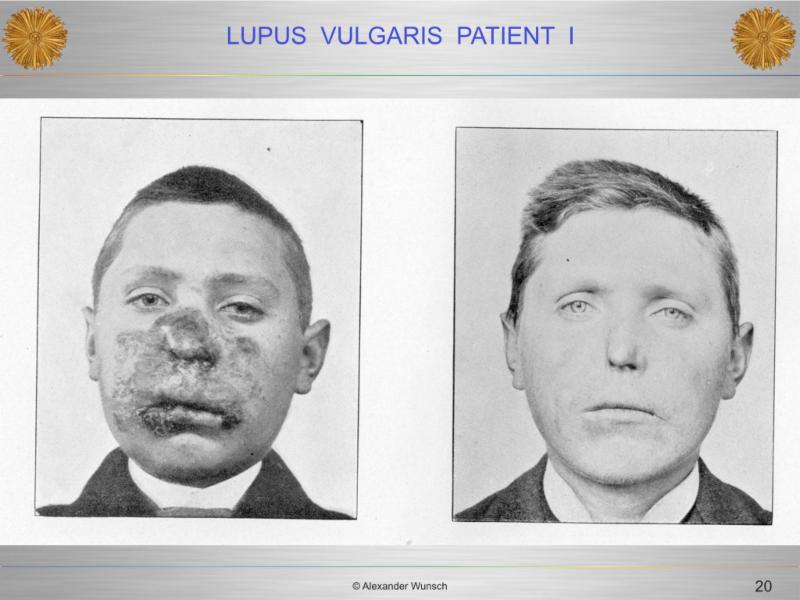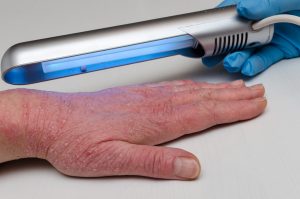Published on May 22, 2020
Public health guidelines to avoid sun exposure combined with the industrialization of society has resulted in people spending a lot less time outdoors. During the industrial revolution, the incidence of tuberculosis and rickets skyrocketed. It was no coincidence that these diseases were named the “diseases of darkness” because sunlight exposure, and thus vitamin D synthesis, was limited during this time. Increased indoor work, smog, and narrow apartment spaces all contributed to vitamin D deficiency.
History of Phototherapy for Certain Skin Conditions
Human beings have a long cultural history of appreciation for the sun and the use of UV radiation for the treatment of diseases, as discussed in the video Why the Sun is Necessary for Optimal Health by Dr. Alexander Wunsch.
Phototherapy has a history of being especially useful for treatment of skin disorders like cutaneous tuberculosis, eczema, and psoriasis. This effect is largely due to the increased synthesis of vitamin D, which helps protect us from disease. It may also be due in part to the fact that the outer-most layers of the skin rely on the vitamin D3 produced in the skin by sun exposure.
Niels Ryberg Finsen, the founder of modern dermatological phototherapy, was the first to study the scientific effects of sunlight. In 1903, he won the Nobel Prize in Medicine for his discovery of phototherapy treatment for lupus vulgaris (the skin manifestation of tuberculosis) by using concentrated light rays. Below is a picture of one of Finsen’s patients before and after the use of concentrated sunlight on the affected areas with a quartz tool.

Before and after the use of concentrated sunlight
Finsen’s work also led to other developments in phototherapy, such as heliotherapy, which consists of a patient gradually being exposed to sunlight until they become acclimated to local sun conditions.
21st Century Heliotherapy for Skin Conditions
 Today, the evidence persists that sunshine exposure and artificial UV light (emitting both UVA and UVB light) are beneficial for the treatment of dermatological conditions. A recent paper reviewed the effectiveness of home phototherapy compared to a clinical therapy setting for the treatment of dermatologic conditions like psoriasis, vitiligo, and atopic dermatitis. Home based phototherapy, a treatment that involves brief exposure to UV light, utilizes a variety of devices including hand wands, lamps, and tanning beds. This review found that the convenience provided by home UV phototherapy increases the likelihood that the patient adheres to treatment and lowers the overall cost of treatment in this population.
Today, the evidence persists that sunshine exposure and artificial UV light (emitting both UVA and UVB light) are beneficial for the treatment of dermatological conditions. A recent paper reviewed the effectiveness of home phototherapy compared to a clinical therapy setting for the treatment of dermatologic conditions like psoriasis, vitiligo, and atopic dermatitis. Home based phototherapy, a treatment that involves brief exposure to UV light, utilizes a variety of devices including hand wands, lamps, and tanning beds. This review found that the convenience provided by home UV phototherapy increases the likelihood that the patient adheres to treatment and lowers the overall cost of treatment in this population.
Furthermore, vitamin D deficiency has been associated with psoriasis and eczema. An observational case-control study found that reduced vitamin D levels were more common in psoriatic patients than in healthy controls; and that patients with the lowest vitamin D levels had the most severe disease for the longest duration of time. Another study by McCullough et al. reported findings from long-term hospitalized patients who were given 5000 to 50,000 IU per day of vitamin D. Three patients with psoriasis were given doses of 20,000 to 50,000 IU per day, and all showed marked improvements within 3 to 4 months, with no negative effects due to supplementation. This highlights the need for vitamin D supplementation in populations that suffer from skin disorders, possibly due to the role vitamin D plays in modulating the immune system.
Could you use more sunshine and vitamin D?
This sunshine month, as always, it is important to remember that getting regular, proper sun exposure, without burning, is essential to good health – for reasons beyond vitamin D. However, it is still important to know what your vitamin D levels are; test today, and take the necessary steps to get your vitamin D level to your target range for health!
Are You Getting Enough Vitamin D to Help Yourself?
We’re in a time of great crisis that could be greatly affected by making sure you and everyone you know has a serum level of at least 40 ng/ml. Help us help you.
Do you know what your vitamin D level is? Be sure to test today to find out, and take steps to keep it within a target of 40-60 ng/ml or 100-150 nmol/L! Give your immune system the nutrients it needs to support a healthy you and protect yourself from unnecessary diseases.
GrassrootsHealth Nutrient Research Institute is preparing to do a Community RCT with the use of our myData-myAnswers nutrient health system that over 15,000 people are already using for their health. We will demonstrate how one can use the Nutrient Research Model established by Dr. Robert Heaney to establish the effect of vitamin D serum levels of at least 40 ng/ml (100 nmol/L) on risk reduction with different ethnicities in the population. Please let us know if you’re interested in helping sponsor this project.
Through GrassrootsHealth Nutrient Research Institute, you can also test your essential elements magnesium, copper, zinc and selenium, toxins such as lead, mercury and cadmium, as well as your omega-3 levels, inflammation levels and thyroid stimulating hormone (TSH) level. Find out your levels today! Log on to the test selection page (click the link below) to get your tests and see for yourself if your levels can be improved.
Make sure you track your results before and after, about every 6 months!
Click Here to Access the Test Page
How can I track my nutrient intake and levels over time?
To help you track your supplement use and nutrient levels, GrassrootsHealth has created the Personal Health Nutrient Decision System called
For each specific supplement, you can track what days you take it, how much, and many other details. This will help you know your true supplemental intake and what patterns of use work for you to reach and maintain optimum nutrient levels. Check it out today!









